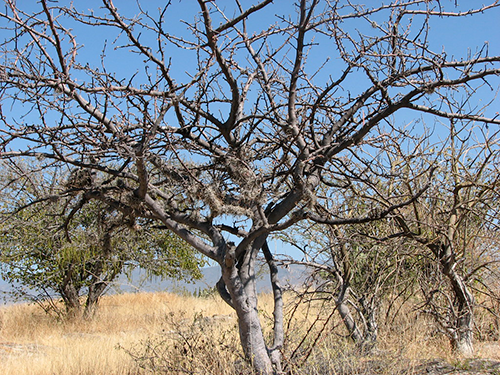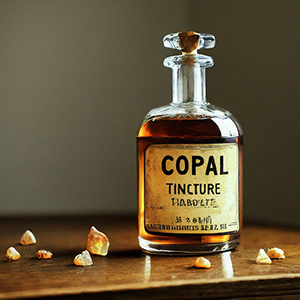Contents
In the rivers and basins of the Orinoco and Amazon, several species of copal trees belong to the genus Copaifera, which exude resin when suffering an incision of perforation on their trunk. The so-called “wood oil” or “copaiba balm” is obtained by distilling this resin. This substance was already used in the 17th century as a remedy against sexually transmitted diseases.

Copal Tree Scientific Facts
- Other names – Copaiba, copaiove.
- French – Copaier.
- Spanish – Copaiba.
- Environment – Tropical regions of South America, especially Brazil, Columbia, Venezuela, and the West Indies.
- Description—This magnificent Leguminosae family tree grows from 15 to 20 m high. Its white flowers form spikes. The fruit is an oval-shaped pod containing a single seed covered by flesh.
- Parts of the tree are used medicinally – The resin is extracted from the trunk.
Healing Properties

Copal tree balm contains essential oil and a resin, whose composition of copaibic acid predominates. This acid is eliminated through urine (kidneys) and acts as an antiseptic and anti-inflammatory substance on the genital and urinary mucosa. It is effective for blennorrhagia in both males and females.

Blennorrhagia is a sexually transmitted disease that manifests itself as inflammation and irritation of the urethra (the tract through which urine flows outside the body). It has also been used as a balm for bronchitis.
WARNING – Never exceed the recommended dose, nor take it for more than ten days, since it can produce skin rashes, nephritis, and digestive disorders.
How to use Copal Tree
- Copaiba balm. Take a teaspoonful (5 g) one or two times a day.
- Pure incense without any fillers, sticks, or anything else to get in the way of the scent.
- One pound of white Copal Tree Sap Gum.
- Origin: Indonesia
- 1 lb Bulk Bag
- Govinda Brand
DISCLAIMER: All content on this website is presented solely for educational and informational objectives. Do not rely on the information provided as a replacement for advice, diagnosis, or treatment from a qualified medical expert. If you are pregnant, nursing, or have any preexisting medical concerns, talk to your doctor before using any herbal or natural medicines.
REFERENCES
- George D. Pamplona-Roger, M.D. “Encyclopedia of Medicinal Plants.” George D. Pamplona-Roger, M.D. Encyclopedia of Medicinal Plants. Ed. Francesc X. Gelabert. vols. 2 San Fernando de Henares: Editorial Safeliz, 2000. 571. Print.
- Google Scholar https://scholar.google.com/
- ScienceDirect https://www.sciencedirect.com/
- Indigo Herbs https://www.indigo-herbs.co.uk/
Last update on 2025-06-04 / Affiliate links / Images from Amazon Product Advertising API

